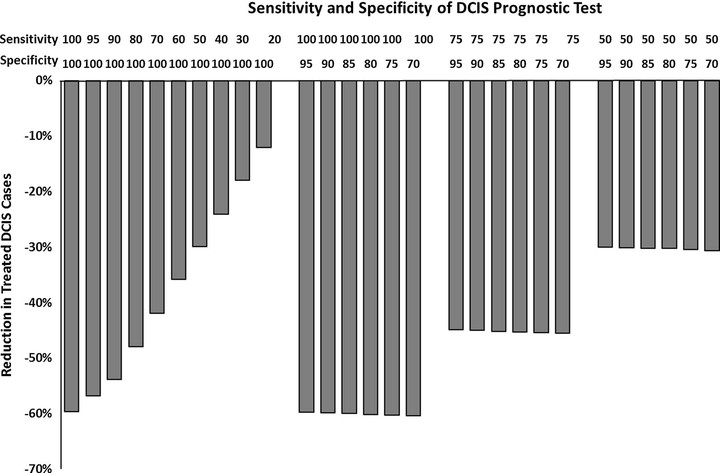Comparative effectiveness of incorporating a hypothetical DCIS prognostic marker into breast cancer screening

Abstract
PURPOSE: Due to limitations in the ability to identify non-progressive disease, ductal carcinoma in situ (DCIS) is usually managed similarly to localized invasive breast cancer. We used simulation modeling to evaluate the potential impact of a hypothetical test that identifies non-progressive DCIS. METHODS: A discrete-event model simulated a cohort of U.S. women undergoing digital screening mammography. All women diagnosed with DCIS underwent the hypothetical DCIS prognostic test. Women with test results indicating progressive DCIS received standard breast cancer treatment and a decrement to quality of life corresponding to the treatment. If the DCIS test indicated non-progressive DCIS, no treatment was received and women continued routine annual surveillance mammography. A range of test performance characteristics and prevalence of non-progressive disease were simulated. Analysis compared discounted quality-adjusted life years (QALYs) and costs for test scenarios to base-case scenarios without the test. RESULTS: Compared to the base case, a perfect prognostic test resulted in a 40% decrease in treatment costs, from $13,321 to $8005 USD per DCIS case. A perfect test produced 0.04 additional QALYs (16 days) for women diagnosed with DCIS, added to the base case of 5.88 QALYs per DCIS case. The results were sensitive to the performance characteristics of the prognostic test, the proportion of DCIS cases that were non-progressive in the model, and the frequency of mammography screening in the population. CONCLUSION: A prognostic test that identifies non-progressive DCIS would substantially reduce treatment costs but result in only modest improvements in quality of life when averaged over all DCIS cases.